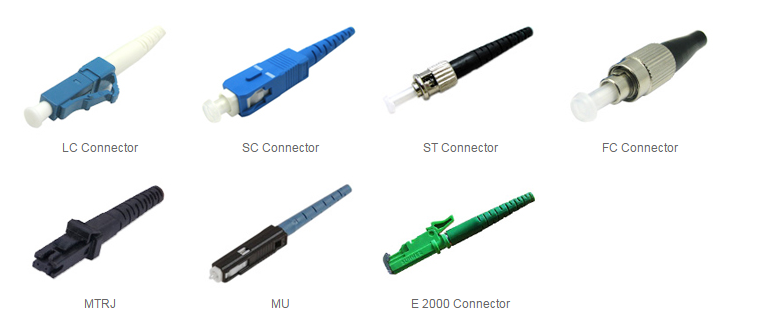April 29, 2016
Fiber optic patch cable, or fiber jumper, is a very basic and important part used to connect equipment and components in fiber optic networks. There are many kinds of fiber optic patch cables, such as single-mode fiber patch cable, multimode fiber patch cable, 10G OM3 fiber patch cable, 10G OM4 fiber patch cable, MPO cable, and a lot of special fiber patch cables for special applications, like military grade fiber cable, plastic optical fiber patch cables, mode conditioning patch cable, volition fiber patch cables, etc. Different kinds of fiber optic patch cables are used for different applications. Among all those fiber jumpers, how to make a right choice? This post will give you a selection guide from several aspects.
According to the core sizes of the fiber, fiber optic patch cables can be divided into single-mode fiber optic patch cable and multimode fiber optic patch cable. Single-mode fiber patch cable uses a single strand of glass fiber for a single ray of light transmission, allowing for greater signal distances. The power of single-mode fiber patch cable comes from high-powered lasers which transmit data at longer distances than multimode fiber patch cable. Multimode fiber optic patch cables have a core of either 50 or 62.5 microns. The larger core of multimode fiber patch cords gathers more light compared to single mode, and allows more signals to be transmitted. Light waves in the multimode fiber patch cable are dispersed into numerous paths as they travel through the cable core. Therefore, multimode fiber patch cable cannot travel as far as single-mode fiber optic patch cable. Multimode fiber patch cables are usually used for short distance applications, such as connections within the data center. Multimode fiber optic patch cable is available in several performance levels to support a variety of distances: OM1 applies to a large portion of the installed legacy systems; OM2 supports Gigabit Ethernet up to 550m; OM3 is laser-optimized to support 10G Ethernet up to 300m; and OM4 is also laser-optimized to support 10G Ethernet up to 550m.
Simplex fiber optic patch cable has a single strand of fiber and one connector on each end. Duplex fiber optic patch cable has two strands of fibers and two connectors on each end of the cable. Duplex fiber optic patch cable is the more popular patch cable type as most fiber electronics need two fibers to communicate, one to transmit data signals, and the other to receive signals. But in a few applications, only one fiber is needed, so simplex fiber optic patch cable is good for you. If you are not sure, you can always be on the safe side by ordering duplex fiber optic patch cables, and only using one of the two fibers.
Fiber optic patch cable types can also be classified by the fiber optic connectors. They can be terminated with a variety of connector types such as LC, SC, FC, ST, MU, MTRJ, E200, etc. Connectors on both ends of a fiber jumper can be the same and can also be different. Fiber optic connectors have different constructions and their respective applications. For example, LC connector is a small form factor plastic push/pull connector with a 1.25mm ferrule, and it has a locking tab and a plastic housing and provides accurate alignment via its ceramic ferrule; FC connector is a metal screw on connector with a 2.5mm ferrule, and it is extensively used at the interfaces of test equipment due to its ruggedness. So when selecting a fiber optic patch cord, one important criterion to consider is to choose one with the most appropriate connector type that meets your needs.

Fiber optic patch cables will be used in a variety of installation environments, thus there will be requirements for the jacket materials. The standard jacket type is called OFNR (optical fiber non-conductive riser) which contains no metal in it, conduct stray electric current, and can be installed in a riser application (going from one floor up to the next, for instance). OFNR cable jacket is also known as plenum jackets, which are suitable for plenum environments such as drop-ceilings or raised floors. Many data centers and server rooms have requirements for plenum-rated cables. Another jacket type is LSZH (low-smoke zero-halogen), which is made from special compounds which gives off very little smoke and no toxic halogenic compounds when burned and is being used in many public places, like schools, hospitals, train stations, etc.
Knowing the special applications of each kind of fiber jumper and the desired capabilities is what you need to do before jumping to a decision. Your choice will affect the level of fiber protection, ease of installation, splicing or termination, and even the whole cost of the project. How to select the fiber optic patch cord that you need exactly? You need to take all those mentioned factors into consideration, single-mode or multimode, simplex or duplex, connectors and cable jackets. And then make the right choice.
Posted by: jowang at
03:34 AM
| No Comments
| Add Comment
Post contains 838 words, total size 6 kb.
35 queries taking 0.0141 seconds, 70 records returned.
Powered by Minx 1.1.6c-pink.









